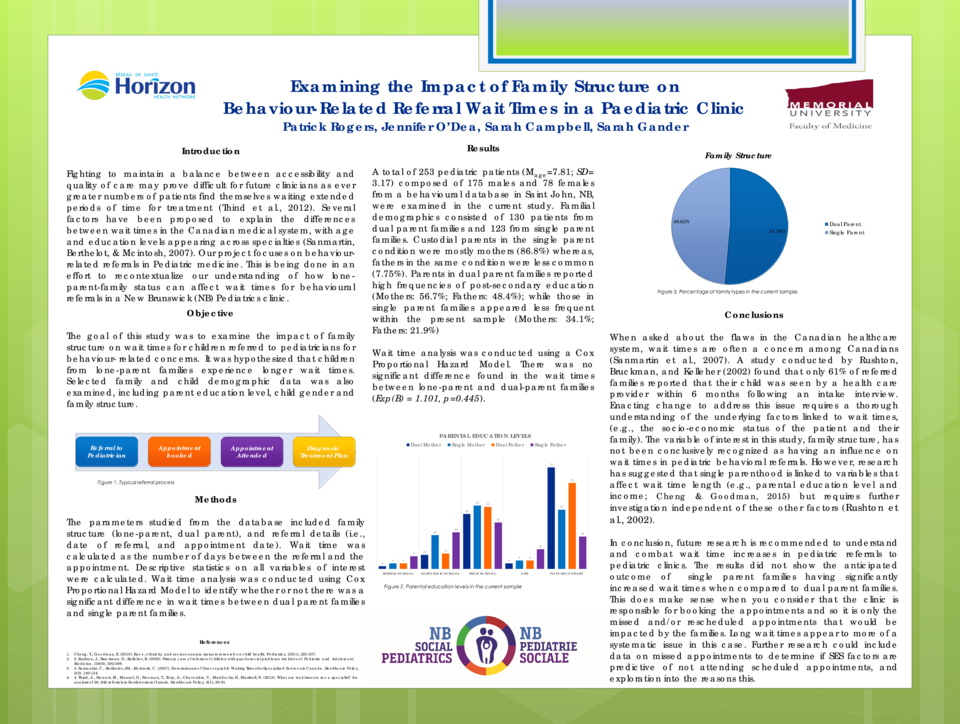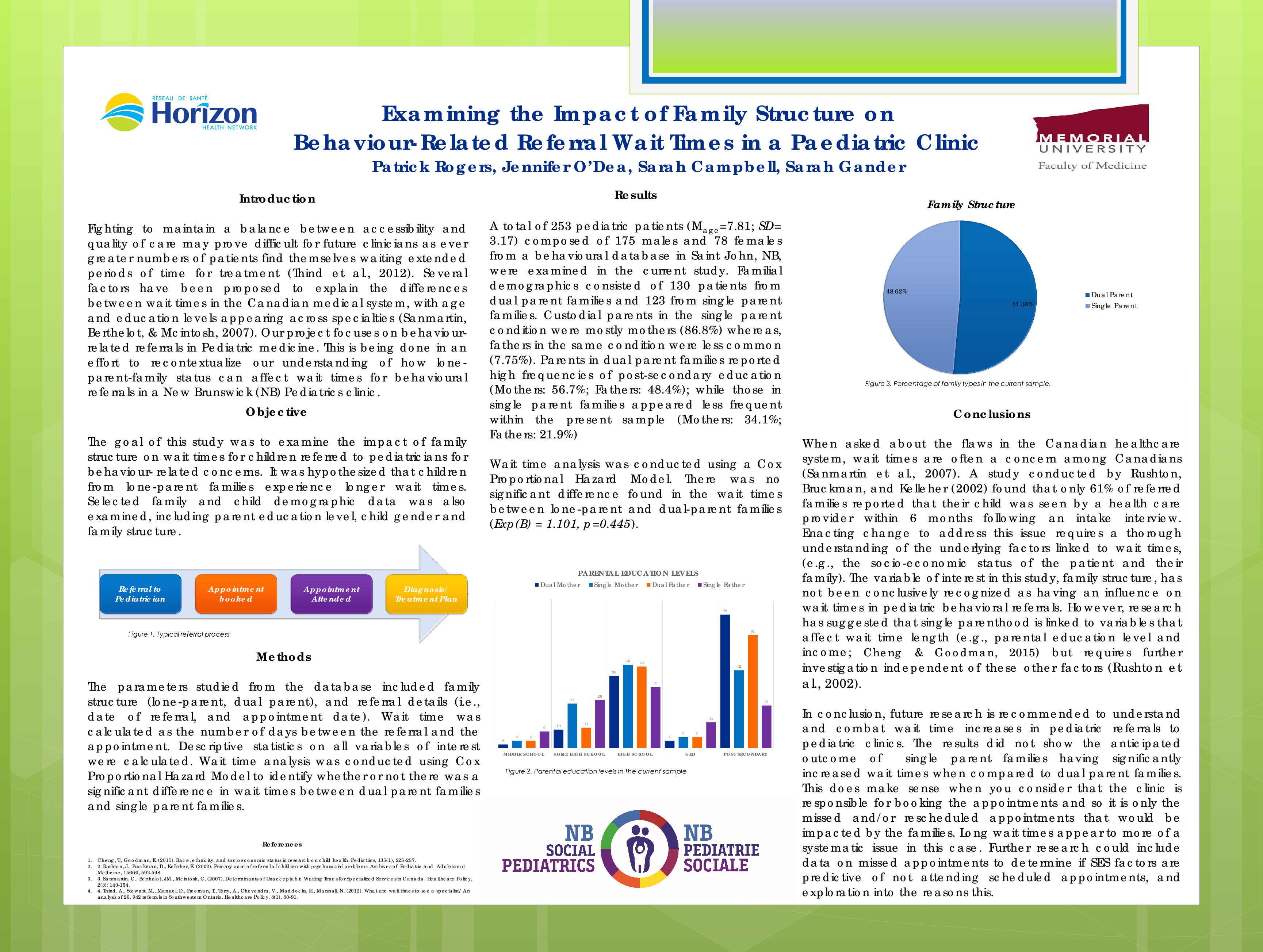Abstract
The purpose of this study is to examine the effect of family structure on referral wait times in New Brunswick pediatric patients. This question will be addressed by an analysis of the database of behavioral referrals from a pediatric clinic. It is our hope that this information can help to reduce referral wait times in single parent families by addressing well-documented barriers to timely access. It is expected that single parent families have longer behaviour-related referral wait times than dual parent families. As such, it is thought that there is a positive association between the variables of interest as the single parent variable is predictive of increased wait times. The parameters to be studied from the database include family structure (single parent, dual parent), and referral details: date of referral, and appointment date. Wait time will be calculated as the number of days between the referral and the appointment. Child and parent demographics will also be included (child age & gender, parent age at child’s birth, parent education level). A descriptive analysis will be conducted on the extracted variables. Wait time analysis will be performed using Cox Proportional Hazard Model, which will identify whether or not there is a significant difference in wait times between the two groups.
The patient population is comprised of New Brunswick pediatric patients referred for behavioural issues, regardless of gender, socioeconomic status, or ethnicity. The results of this study are applicable to New Brunswick but clinicians should not be considered generalizable to a greater population. Finally, as a pediatric study, the vast majority of participants will be between five and eighteen years of age. This tidy utilizes a secondary use of clinical data, and did not contact or recruit patients to participate. This study was designed as a retrospective data analysis to determine if single parent families wait significantly longer for pediatric referral appointments than dual parent families. The population was divided into two groups: 130 patients from dual parent families; 123 patients from single parent families. Dual parent mothers were found to be more educated with 72% of them having post-secondary education (compared with 42% from single parent mothers). Dual parent fathers have a similar breakdown with 61% having post-secondary education (compared with 23% from single parent fathers). Calculated wait times were 226.8 and 205.3 days for each condition respectively. There was no significant difference in wait times based on family structure, according to the survival analysis. This poster will discuss the implications of these findings.






